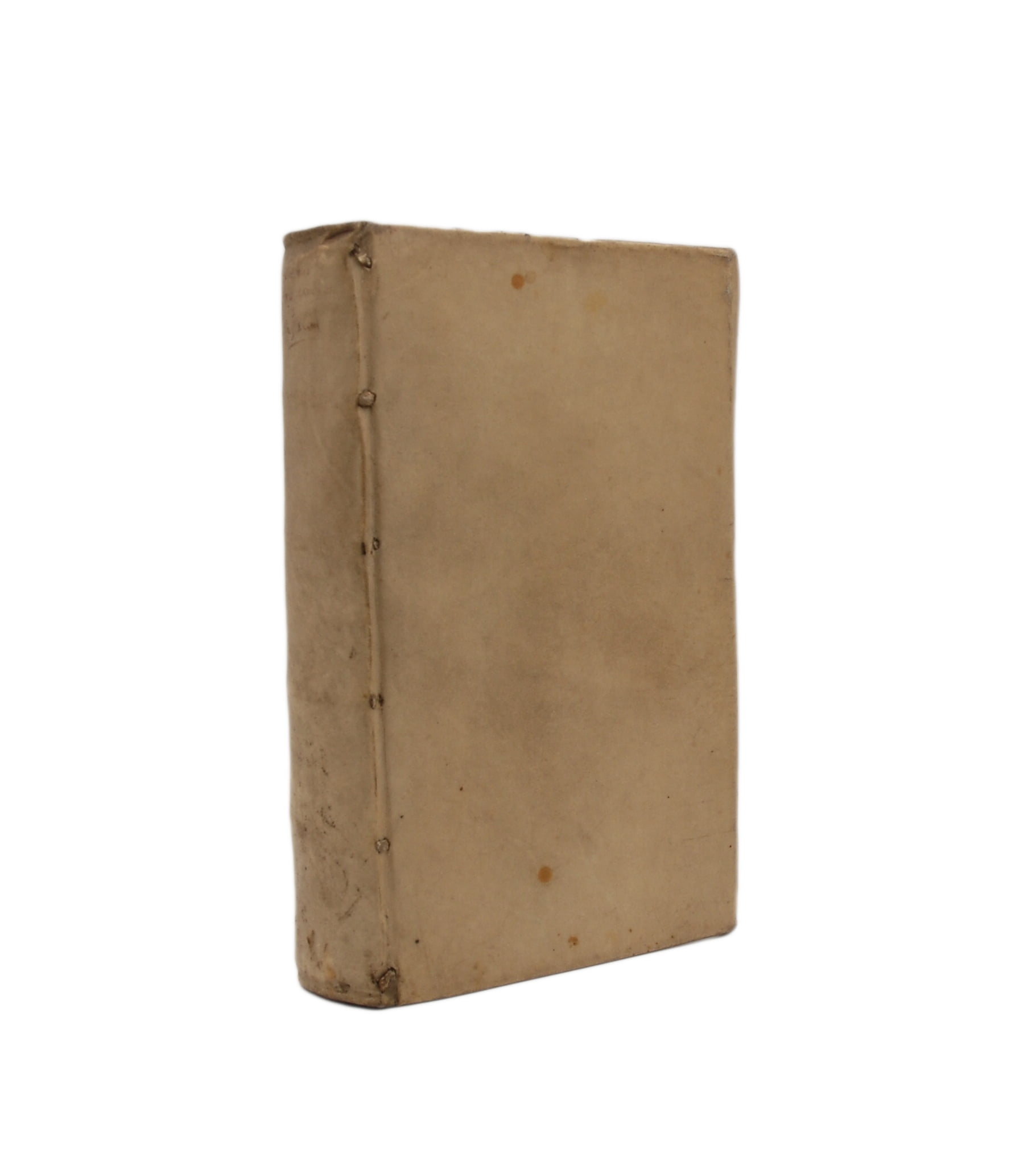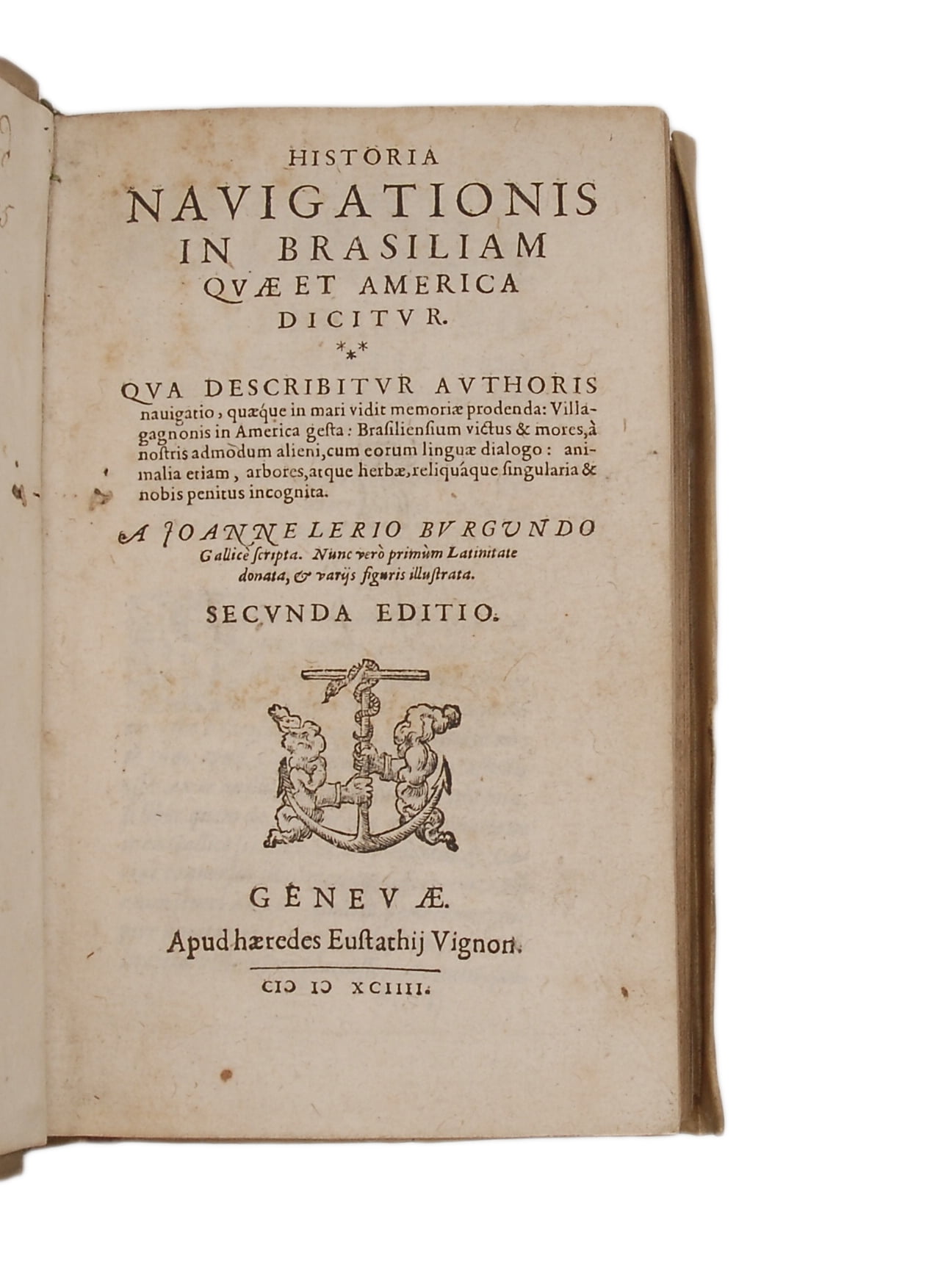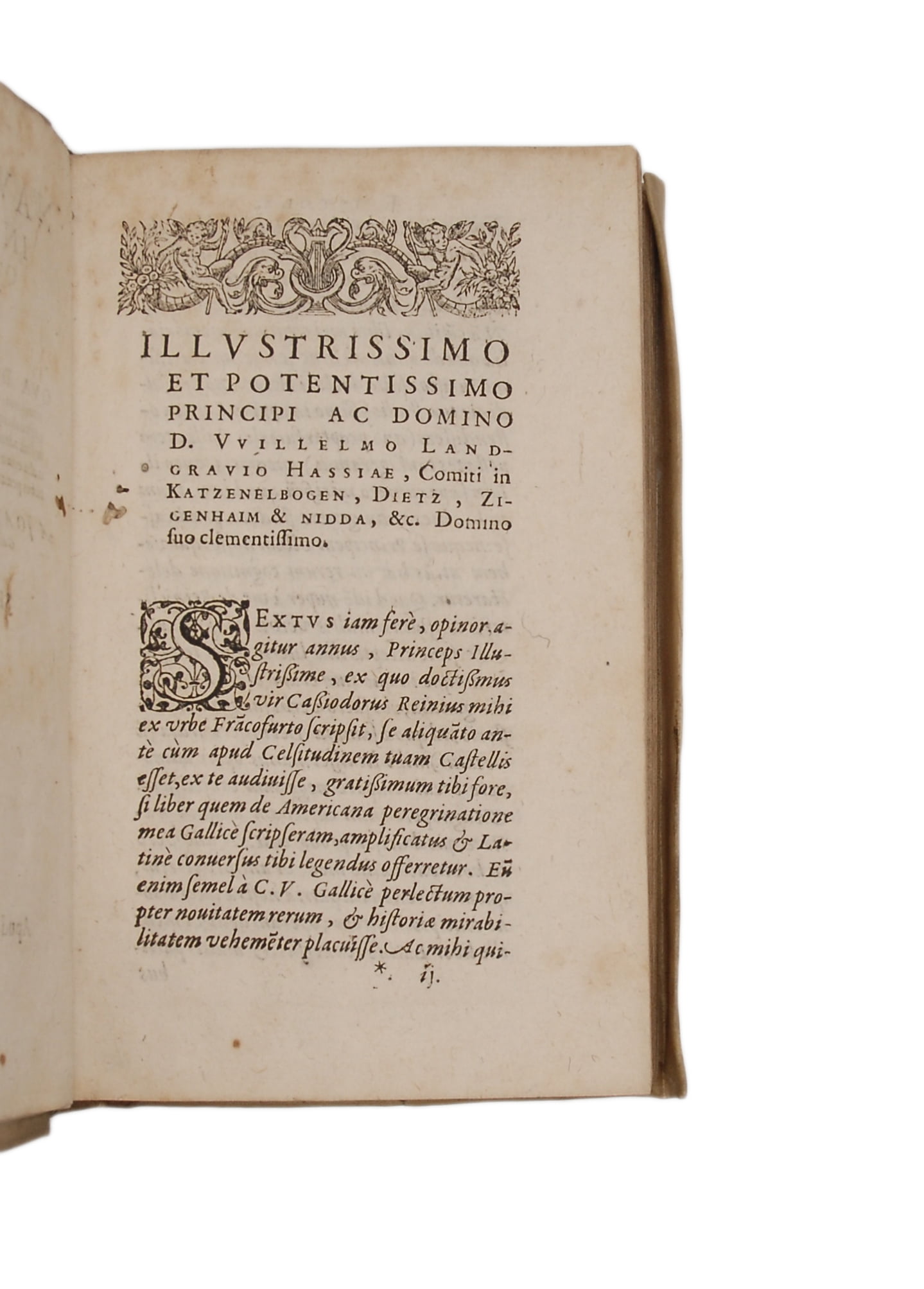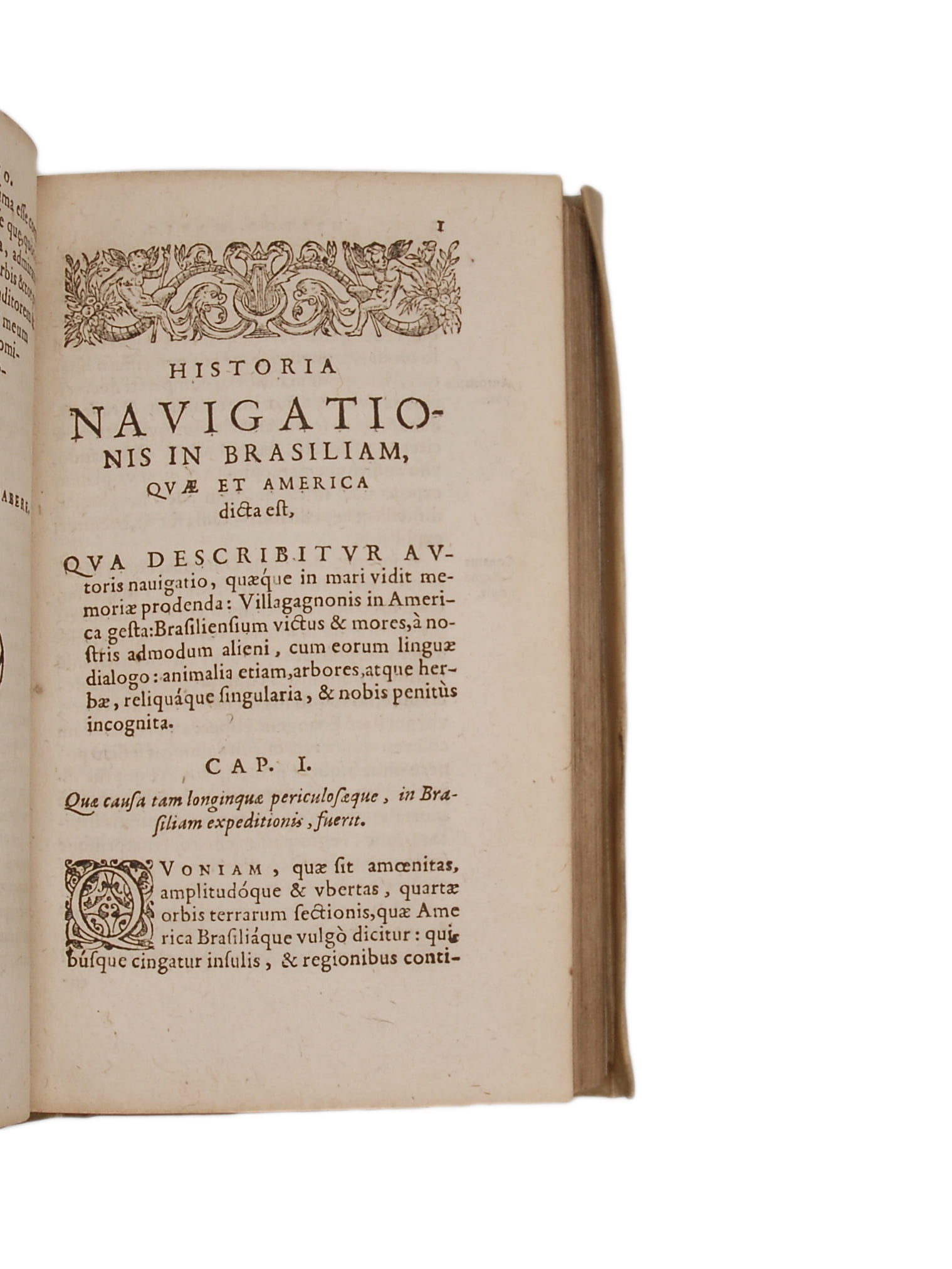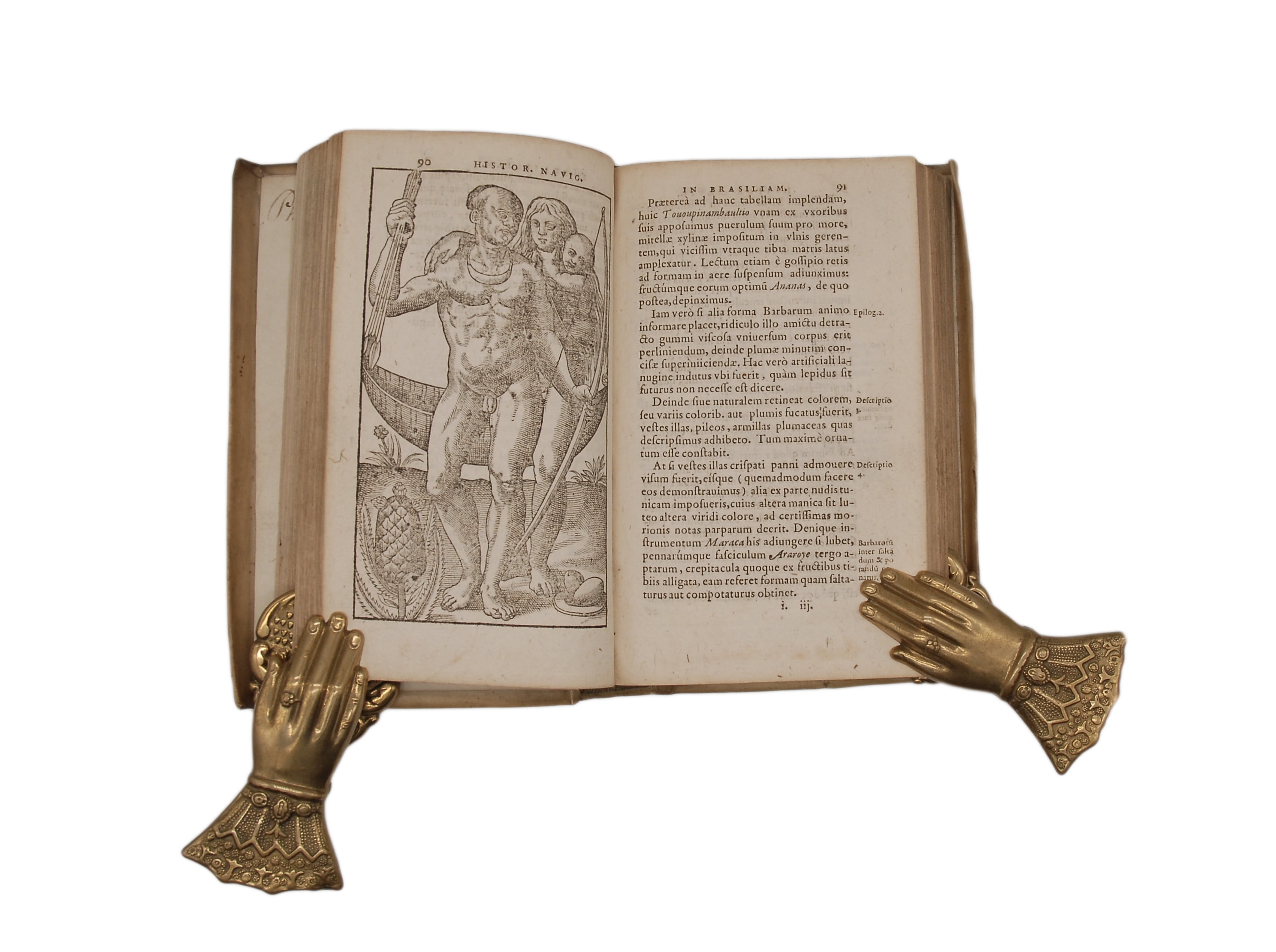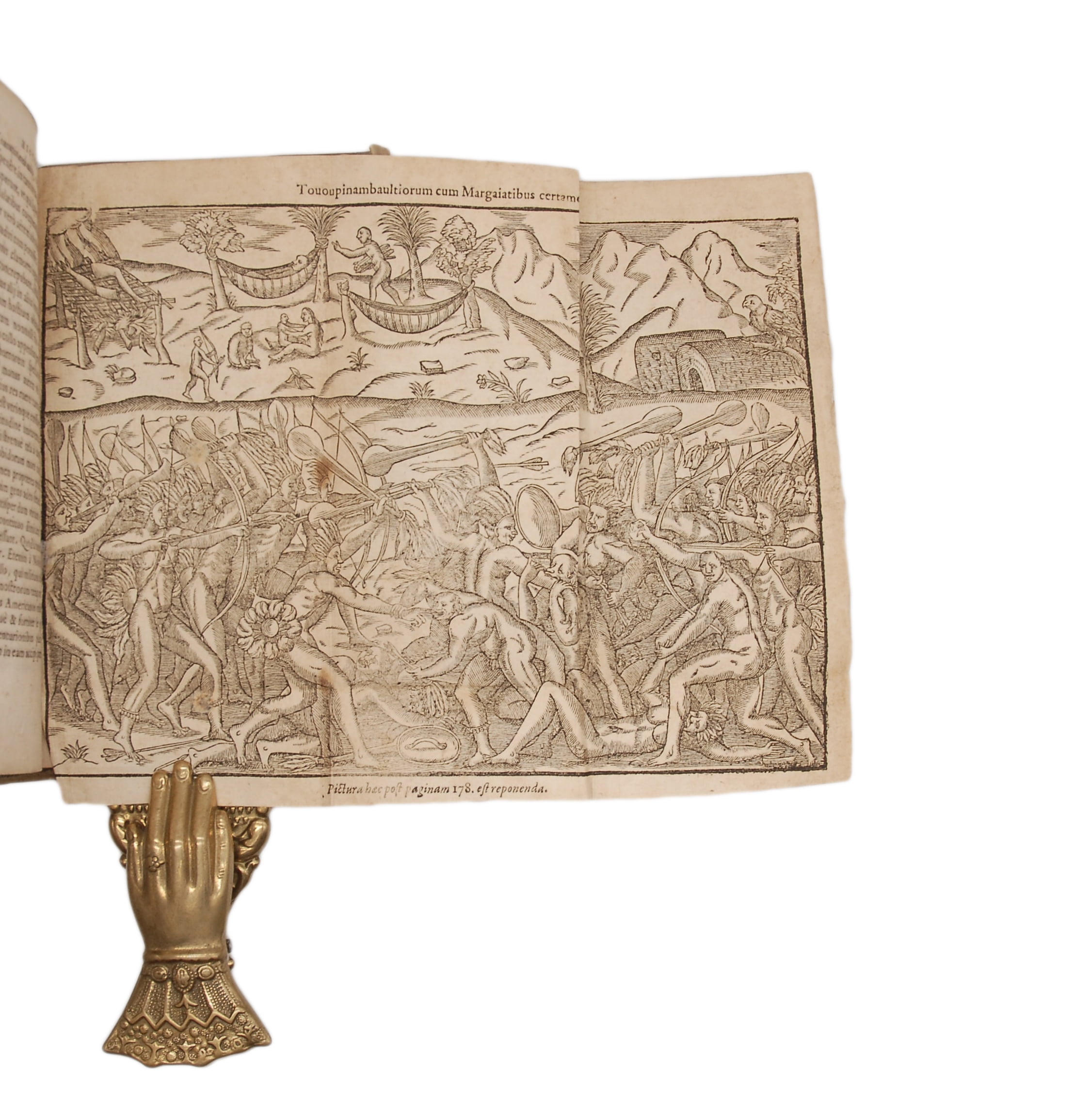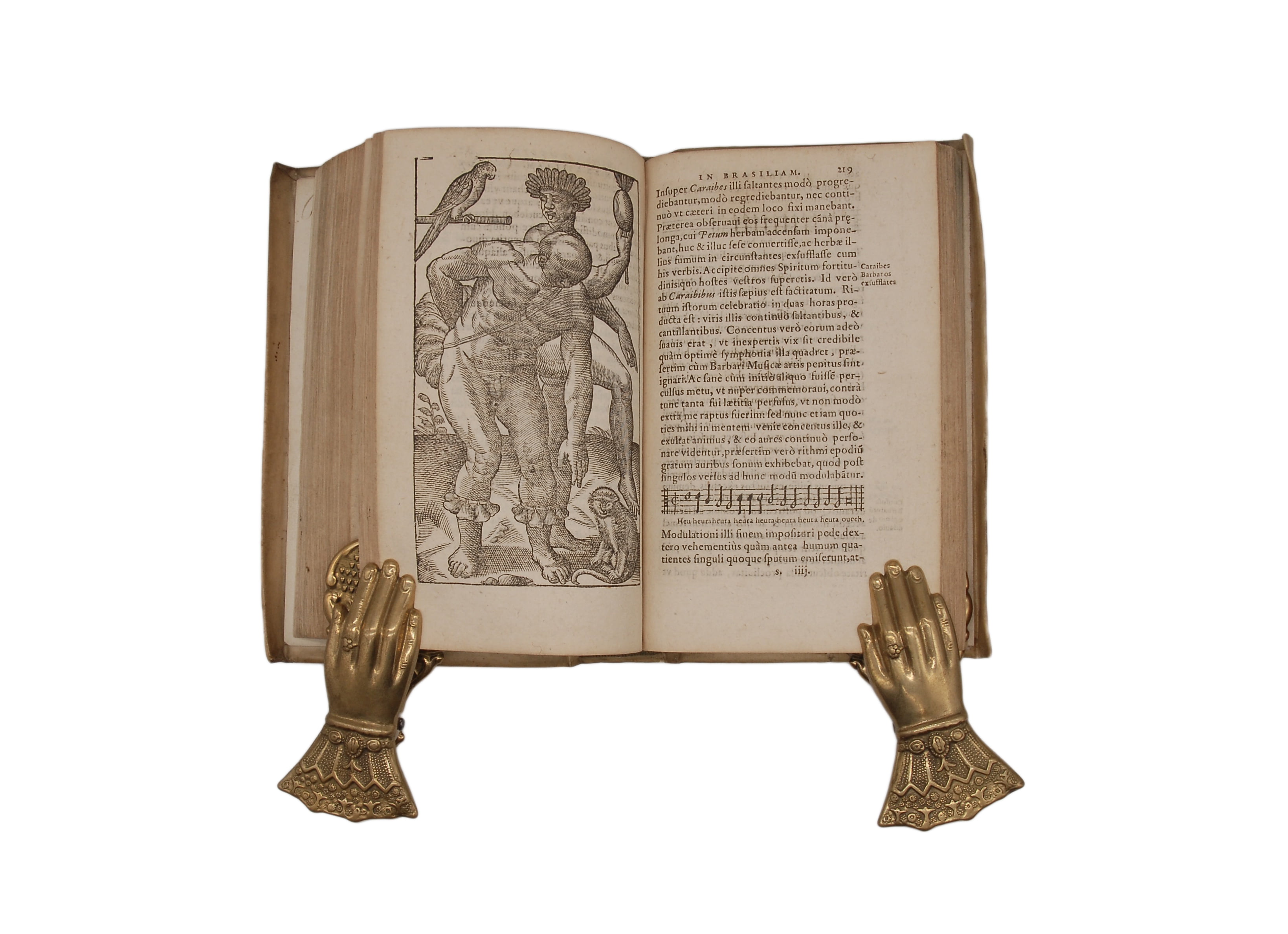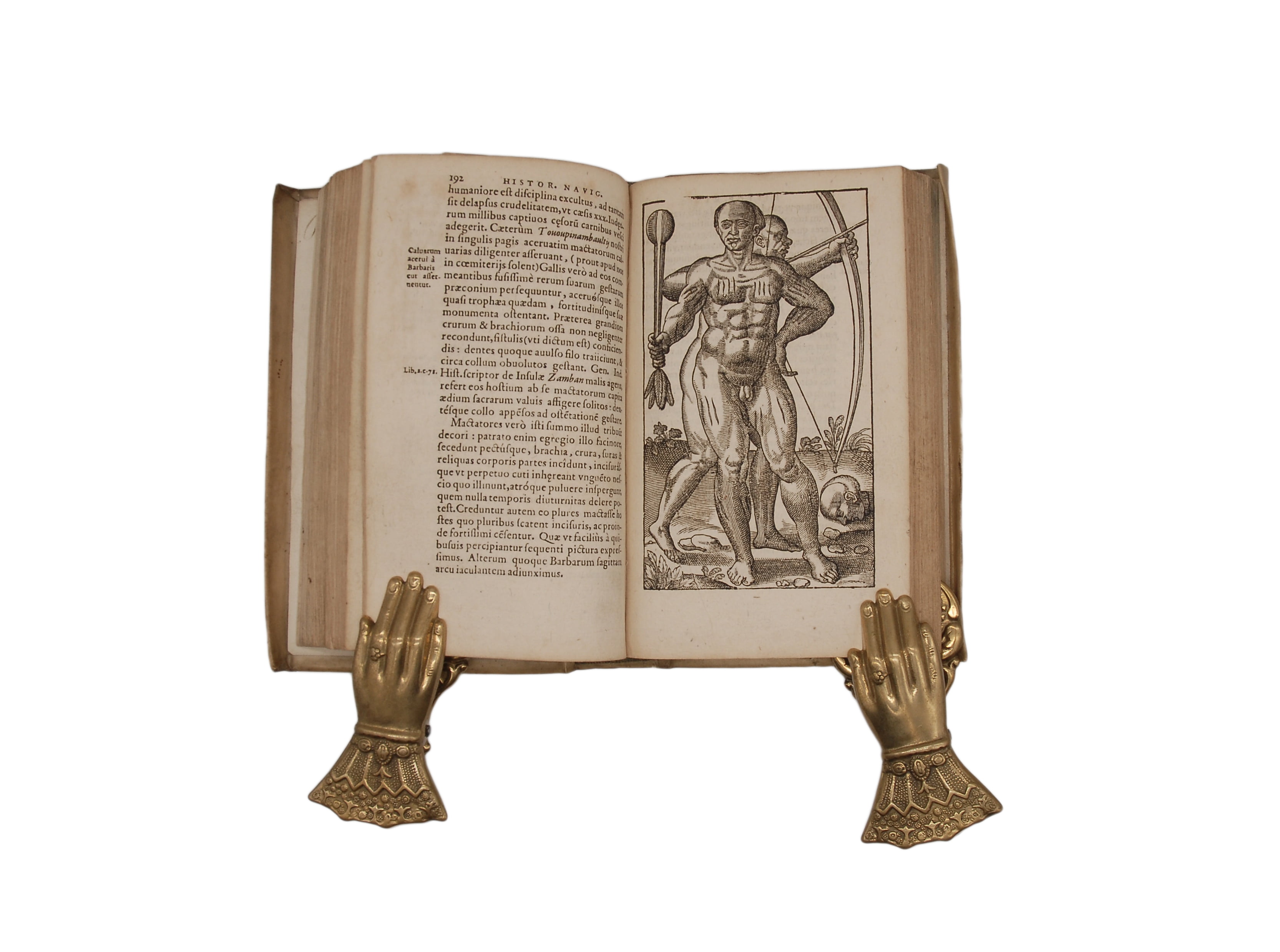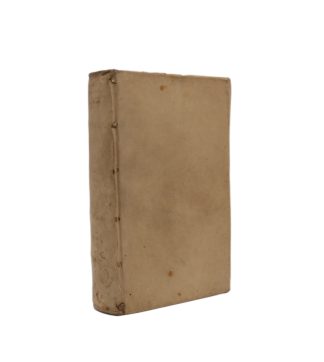LÉRY, Jean de
ILLUSTRATED BRAZIL
Historia navigationis in Brasiliam quae et America dicitur
Geneva, apud haeredes Eustathij Vignon, 1594£11,500.00
8vo. pp. (lviii) 340 [i.e., 358] (xv) (i) + folding plate. Roman letter, with Italic, little Greek or musical notation. Woodcut printer’s device to t-p, 7 full-page woodcut scenes with Brazilian natives and landscapes, folding plate with woodcut battle scene, decorated initials and ornaments. Very light browning, extremely small worm trail a blank gutter of first two gatherings, the odd marginal spot, t-p and plate a little dusty. A good, clean copy in contemporary vellum, yapp edges, lower board repaired towards fore-edge, ms. ‘Philip Griffin Warnford March 1785’, his ms. crested monogram PG, and bibliographical ms. note ‘Nasamones Van Cluver in Africa’ (C18?) to ffep verso, the odd C17 ms. note (one in Hebrew), C18 ms. ‘Jo. Ballard A 91[?] KS 90’ at lower edge of last leaf.
A very good, clean copy of the second Latin edition of this ground-breaking, early ethnographic work on Brazil—with beautiful illustrations and the earliest printed native American music. ‘Levi-Strauss called it “the breviary of the anthropologist”, Montaigne probably drew on it to construct his Brazilian “cannibals”; Rousseau certainly used it to build his own image of the state of nature; […] Of all the many travel narratives of the C16 Jean de Lery’s […] contains the most sensitive and detailed account we have of a Native-America people before prolonged contact with Europeans had radically changed their culture’ (Pagden, 212).
In 1557, the French Reformed pastor de Léry (1536-1613) joined a missionary expedition to the Calvinist colony of Guanabara Bay, near Rio de Janeiro, in France Antartique. Short-lived, it concluded in 1558, with a two-month stay among the Tupinamba. Written in 1563, the account of de Léry’s adventure first appeared in French in 1578. His Latin translation was published in Geneva in 1586; ‘this Latin version is, in reality, more valuable than the original, as it contains passages that were suppressed in the French’ (Sabin). The narrative begins with the difficult sea voyage and arrival at Fort Coligny, recently established by Chevalier de Villagaignon. It continues with descriptions of the natives’ physical characteristics, their food, local ‘monstrous’ fauna, insects, trees, herbs, warfare, religious ceremonies, marriage, polygamy, kinship, their treatment of guests, illnesses and funeral rites. Important is the astonishing verbatim reproduction of a conversation between de Léry and King Tououpinābaultios presented in the Tupi language (which de Léry calls ‘Brasilice’) and Latin, followed by observations on Tupi grammar and lexicon. His sophisticated approach to ethnography also surfaces in his desire to reproduce, through musical notation, melodies of five local songs, first added to the 1580 edition and revised in time. These are: the Songs of the Yellow Bird and the Piraou-assou Fish, and three melodies collected during the Indian Witches’ Sabbath which Léry witnessed. They later appeared in de Bry’s ‘Great Voyages’ where they were revised ‘to make [them] more pleasing to European ears’ (Azevedo, 90-5).
The exquisite 4 original woodcut portrayals, overseen by de Léry, became some of ‘the most iconic early modern images of the American savage’, influencing Thomas Harriot and John White’s famous travel work published by de Bry. Seeking to separate traditional iconography from the reality of observation, ‘he understood that only the combination of image and text, on the basis of a personal experience […], may allow the traveller to transmit to his European audience the reality of a New World’ (Rubies, 120). The remainder were based on Thevet’s ‘Singularitez’ (1557).
Philip Griffin (fl. late C18) was rector at Warnford, Hampshire, and an active Fellow of the Society of Antiquaries, engaging in debates on epigraphy and English monuments. We have traced his ex-libris in several books on travel and cartography. John Ballard (fl. C18) was probably the Southampton antiquary interested in ancient numismatics.
Borba de Moraes I, p.470 (1586 ed.); Sabin 40154; JCB 1:333; Alden 594/32; JFB L269. L. Correa de Azevedo, ‘Tupynambá Melodies’, Papers of the American Musicological Society (1941), 85-96 ; J.-P. Rubiés, ‘Text, Images, and the Perception of “Savages” in Early Modern Europe’, in European Visions: American Voices (2009), 120-30; A. Pagden, ‘History of a Voyage…’, MAN (1994), 126.

